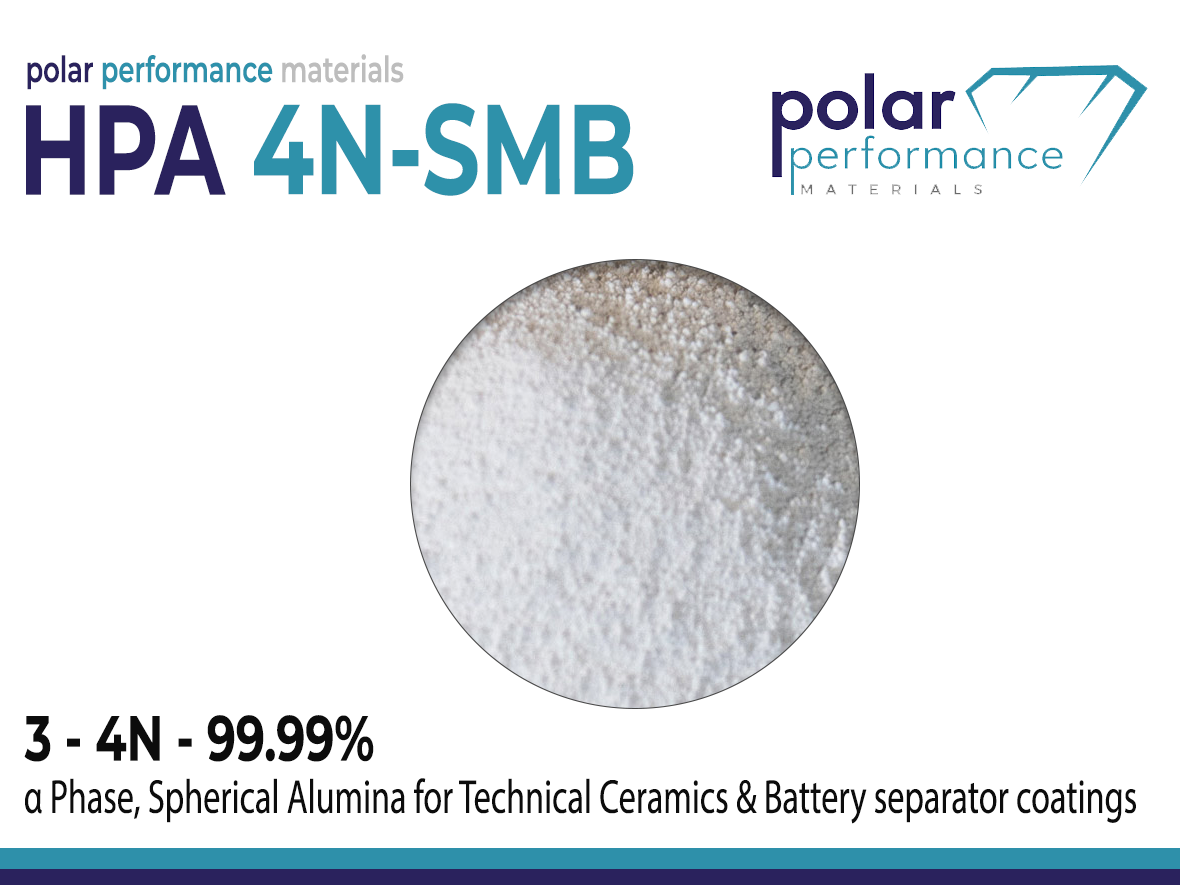HPA-4N-SMB | 3 - 4N Purity Alumina
- 3N - 4N Purity
- Spherical morphology
- Thermally conductive filler
Product Description
HPA-4N-SMB is a high-purity alumina product characterized by its 3N-4N (99.9%-99.99%) purity level. It features a spherical morphology and a surface area of 12-18 m²/g, optimized for thermally conductive applications. This material offers consistent performance and low impurity levels, making it suitable for a variety of high-tech applications where thermal management is critical.
HPA-4N-SMB is characterized by its consistently low impurity levels, ensuring reliable performance across a wide range of applications, from electronics to energy storage. Its D50 particle size, ranging from 0.4 to 5 µm, allows for uniform dispersion and seamless integration into diverse processing environments, whether it be in the production of thermal interface materials, ceramics, or other high-tech components.
This material's high purity and controlled particle size distribution make it an indispensable choice for industries demanding precise thermal management, such as in the manufacturing of LEDs, semiconductors, and lithium-ion batteries. The consistent quality of HPA-4N-SMB not only enhances thermal performance but also contributes to the longevity and reliability of end products, ensuring optimal functionality in even the most demanding applications.
Technical Specifications
| General Properties | |||||||||||
| Density (g) | 0.5 - 0.7 g/cm3 | ||||||||||
| Morphology | Irregular | ||||||||||
| Particle size (D50) | 0.5 - 0.7 um | ||||||||||
| Purity | 99.9 - 99.99 % | ||||||||||
| Surface Area | 12 - 18 m2/g | ||||||||||
| Chemical Properties | |||||||||||
| Phase | α | ||||||||||
| Other Properties | |||||||||||
| |||||||||||
Additional Information
Applications
HPA-4N-SMB is crucial in advanced battery technologies, especially for enhancing thermal management and safety in battery systems. One of its primary applications is in lithium-ion batteries (LiBs), where it serves as a coating for the battery separator, which lies between the cathode and anode. By coating the separator with HPA-4N-SMB, thermal shrinkage is significantly reduced, preventing potential short circuits that could compromise the battery’s safety. Additionally, the coating helps inhibit dendrite growth, which can adversely affect lithium-ion transport, further enhancing the battery's performance and longevity.
HPA-4N-SMB is also highly compatible with various coating processes. Its uniform particle size and spherical shape allow for easy dispersion into different matrices, forming stable suspensions essential for creating smooth, defect-free coatings. This makes it particularly advantageous for applications like LED phosphor coatings or protective layers in electronic devices, where surface consistency and uniformity are critical for optimal performance.
Note: Alumina coated battery separator prevent thermal shrinkage during high temperature operations.
Reference: Research Study: Preparation of a high-purity ultrafine α-Al2O3 powder and characterization of an Al2O3-coated PE separator for lithium-ion batteries by Dong-Won Lee, Sang-Hun Lee, Yong-Nam Kim, and Jong-Min Oh
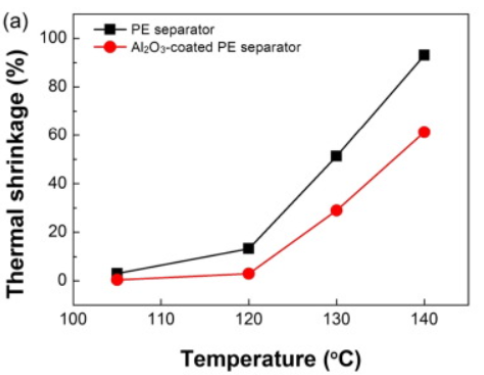
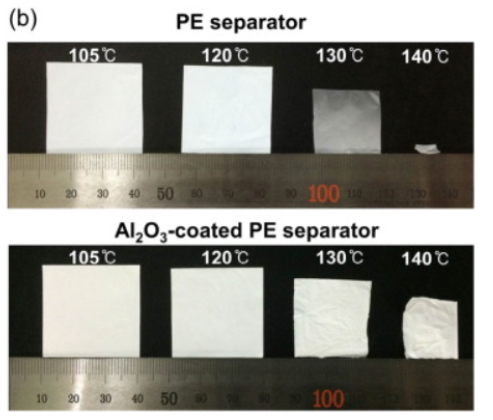
What is the consequence of an unreliable battery separator?
With increases in battery energy density, voltage and packing size, battery materials become less and less electrochemically stable. It is reported that an unusually thin monolayer and an aggressive increase in battery energy, plus other manufacturing defects in the battery used in the Galaxy Note 7 resulted in a total product recall of their Galaxy Note 7 mobile phone.
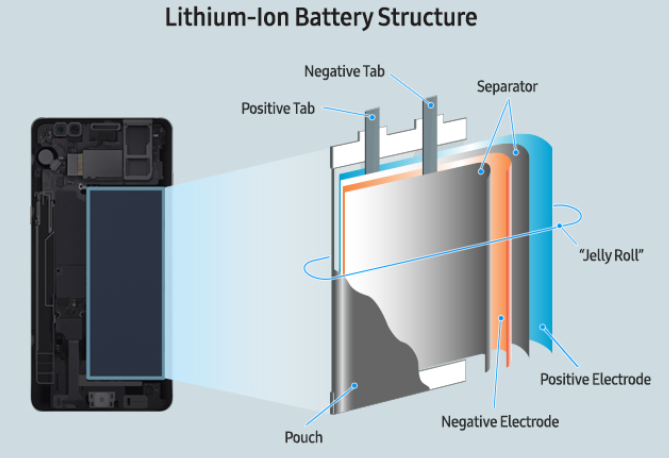
Samsung’s investigation confirmed that the fires in the devices were caused by separate battery issues from two different suppliers. The third-party testing company, Underwriters Laboratories (UL), tested the batteries from 'Company A' and 'Company B', believed to be SDI and ATL, respectively. UL discovered that SDI batteries had internal short circuits caused by damage, while some undamaged batteries had deformed top right corners, and some negative electrodes were too long. For the ATL batteries, UL found that some lacked insulation tape, and in other cases, the insulation was damaged by protruding welds. These issues could lead to short circuits, overheating, and even explosions. After recalling phones with SDI batteries due to a design flaw that increased the risk of short circuits, Samsung replaced them with ATL batteries. However, manufacturing defects in the ATL batteries also caused explosions, leading to a second recall. This heavily damaged consumer trust and brand image, ultimately forcing Samsung to discontinue the production of the Note 7 to prevent further losses.
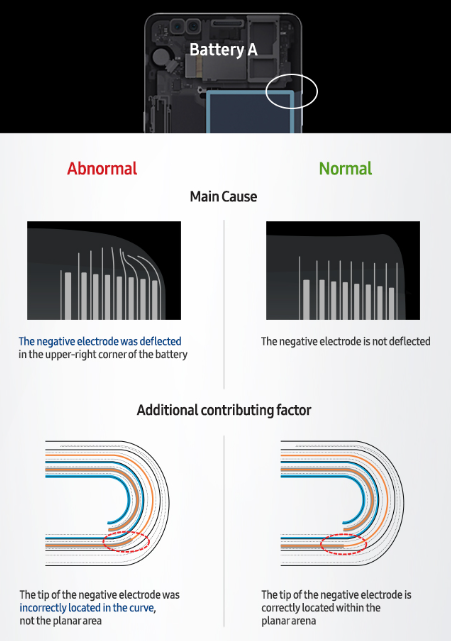
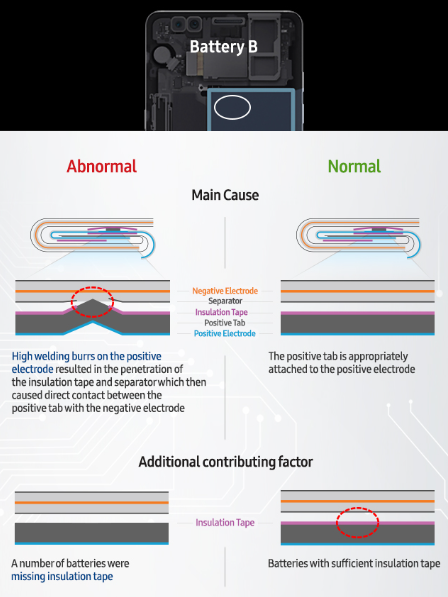
Thermal Interface Fillers
High Purity Alumina (HPA) is an excellent filler for Thermal Interface Materials (TIMs) due to its superior thermal conductivity, dielectric properties, and chemical stability. The usual HPA grade used as fillers are the 3N grades as their particle size are suited for managing the heat pathways across the thermal interface. It enhances the heat dissipation capabilities of TIMs by improving thermal transfer between electronic components, reducing the risk of overheating. The fine particle size of HPA ensures that the TIM maintains a consistent bondline thickness and fills in micro-gaps effectively, resulting in better surface contact and improved heat conduction. Additionally, HPA’s resistance to high temperatures and chemical inertness make it ideal for use in demanding environments such as power electronics, LEDs, and high-performance computing systems. Its dielectric nature ensures that it doesn't interfere with electrical performance, making it an essential component in electronic cooling applications.
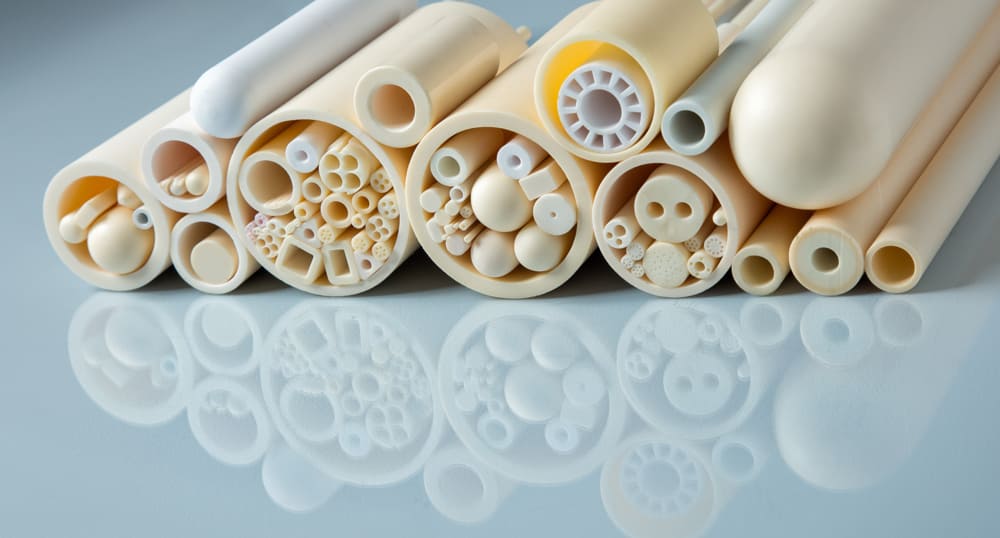
HPA-4N-SMB is particularly well-suited for sintering processes used in the production of high-performance ceramics and components. Its spherical morphology and controlled particle size contribute to uniform packing density and low porosity in sintered products, leading to enhanced mechanical strength, thermal stability, and electrical insulation properties of the industrial ceramic.
One of the most significant applications of alumina in the ceramics industry is as a refractory material. Due to its high melting point, alumina is used as a lining material in high-temperature furnaces and kilns in applications where contaminants should be virtually non existent. Alumina also provides excellent thermal shock resistance, making it an ideal material for use in refractory applications. Alumina is also used as a grinding media in the ceramics industry. The hardness and wear resistance of alumina make it an ideal material for use in grinding applications. Alumina grinding media are used in ball mills, vibratory mills, and other types of grinding equipment.
Industrial Processing Compatibility
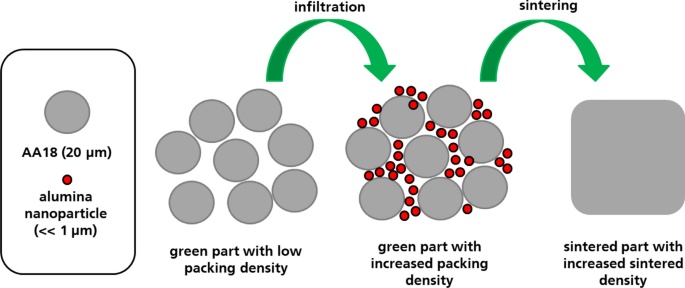
Pressing and Forming of a Green Body part

Chemical Vapor Deposition (CVD) and Physical Vapor Deposition (PVD) Coating Technique
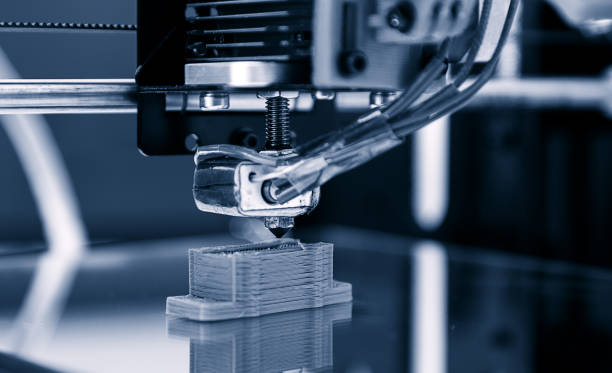
Additive 3D Printing
Pressing and Forming
In pressing and forming applications, such as powder metallurgy or ceramic shaping, HPA-4N-SMB's consistent particle size and spherical shape allow for excellent flowability and compaction. This ensures uniform density and minimal defects in the green body, which are crucial for achieving high-quality finished parts. The material's low impurity levels further reduce the risk of contamination, making it suitable for high-precision components.
Chemical Vapor Deposition (CVD) and Physical Vapor Deposition (PVD)
For applications involving thin film deposition techniques such as Chemical Vapor Deposition (CVD) or Physical Vapor Deposition (PVD), HPA-4N-SMB's high purity and uniform particle size are critical. These characteristics ensure the production of films with consistent thickness, uniform coverage, and minimal defects, which are essential for producing high-quality, functional surfaces in semiconductor and optical applications.
Additive Manufacturing (3D Printing)
With the rise of additive manufacturing, HPA-4N-SMB has proven to be an excellent material for 3D printing high-performance ceramic components. Its fine, uniform particles and high surface area enable precise layer-by-layer deposition, resulting in parts with superior detail and complexity. The material’s thermal conductivity and stability also make it suitable for printing components that require excellent heat dissipation or insulation, such as in electronic devices or thermal management systems.
Customized Solutions
HPA-4N-SMB is produced using advanced manufacturing techniques that ensure high consistency and quality. Our state-of-the-art processing technology guarantees minimal contamination, making it a reliable choice for demanding applications. We offer customizable solutions to meet specific requirements, supported by expert technical assistance and collaborative R&D efforts.


